Cesky Krumlov: castle over the bend
Birds eye view of Cesky Krumlov. On the left is the castle, between the parts of which, just beyond the bridge over the Vltava, are the arches of the Cloak Bridge.
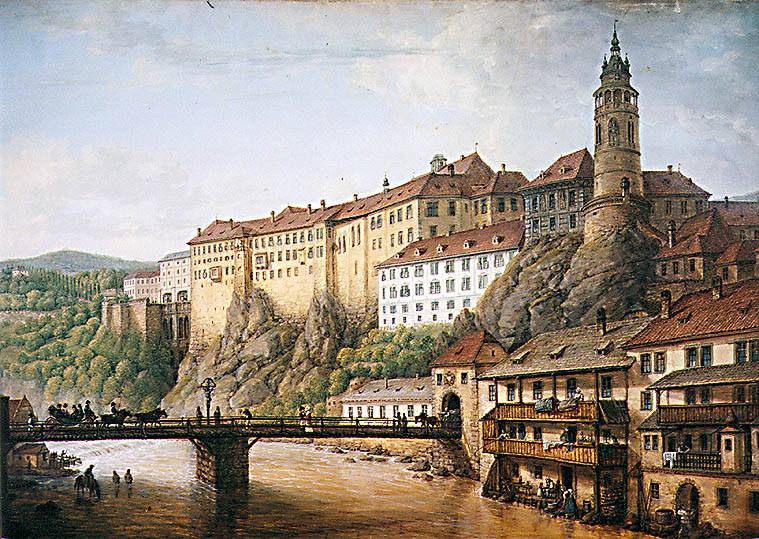
So the castle saw the artist Ferdinand Ruck in 1824 year.
Finally, the bus stopped at the parking lot (the castle is still nowhere to be seen) and we went somewhere. Around the trees, in the distance a hill overgrown with trees, and here its walls seemed to be behind them ... And how could I describe it better ... from the side opposite the river and its bend, where the old part of the town of Cesky Krumlov is located, two wooded hills on which tall trees with windows rise from behind the trees, but between them stands the most original bridge I have ever seen - the Cloak Bridge. This is a four-level (three upper levels covered and with windows!) Height 40 m and length 30, connecting one part of the castle with another. The bridge was built in the 1764 year, that is, it is relatively new, and decorated with Baroque sculptures depicting the saints Wenceslas, Felix Cantalic, Anthony of Padua and John of Nepomuk (although this was told to us later). And you get the pleasure from this bridge twice: first, when you look at it from the bottom up, then, when already from the bridge you look down and at the city. To say which one is stronger is rather difficult. And under the bridge ... today there is a path to the Old Town from the parking lot, but earlier it was a dry moat!
Here it is - the famous Cloak Bridge.
And this is the castle itself, or rather, one of its parts.
And so we looked at this bridge from below and climbed along the serpentine path into the castle itself. Outwardly, these are two rectangles lined up on the very crest of a cliff, inside of which there are several courtyards. But first you get to the open area and look at the city from it. The beauty is incredible! Below - the river loops around the old town with red roofs and everything there is like a fairy tale!
The castle buildings are impressive, don't they?
Interestingly, in spite of all the restructuring, this “cabin” of the toilet has survived on its walls. Well, and on the gothic pore's castle there were much more of them, and all the grace of the womb fell to its foot.
View of the city from the castle.
Interestingly, the first written record of this castle dates back to 1253. Then it was inhabited by the numerous Vitkovets family, which had a coat of arms depicting a green rose. But already in 1302, the castle passed to the Rosenberg family, who chose it for their residence. In their coat of arms they already had a red five-petal rose.
The figure of a knight with the coat of arms of Rosenberg.
The power of the family was such that in 1394 and 1402, when Rosenbergs were twice held here in Český Krumlov, in the dungeon of the Czech and Roman-German King Václav IV. Then Rosenberg skillfully took advantage of the unrest during the Hussite Wars and was awarded new large estates, and expanded the Krumlov Castle so that it would continue to be a Catholic stronghold in the south of the Czech Republic. However, later the Gothic style of the castle was largely lost due to extensive reconstructions of the Renaissance during the reign of Wilhelm von Rosenberg in the second half of the 16th century. At this time, the castle began to turn into a palace. The wall paintings of Gabriela de Blond in the courtyards of the castle caused a complete illusion of many architectural elements with sculptures from ancient stories and mythology. On the contrary, the theme of the decoration of Rosenberg’s private rooms was mostly biblical.
The inner wall of one of the courtyards. All this laying just painted.
Each person has a certain “fad” regarding his origin (it’s not for nothing that in Penza we now have the entire archive packed with grandmothers (!) And even very young people studying their pedigrees), so Rosenberg’s “fix idea” was to prove kinship with the Italian noble family of Orsini. The translation of the Italian name Orsa means bear, and William declared his ancestors to the Italian ancestors and therefore settled the castle moat with bears! This tradition lasts four centuries and has been preserved to this day. There is a ghost of the White Lady in the castle (what kind of well-born castle without a cast?), Which, depending on the black or white color of the dress, should have predicted the birth or death of family members, which is also proof of their nobility. It was first seen in the 1577 year, which is documented.
And here all the walls are covered with illusion painting. So it was fashionable ...
However, bears are bears, but where can we get money for all this? Family debt grew and grew, and as a result, the twelfth ruler of the castle Rosenberg in 1601 - 1602. got in need and sold Cesky Krumlov to Emperor Rudolf II - a very interesting fate for a man. He was engaged in the occult, and the first Kunstkamera, and ... Protestants throughout the Czech Republic pursued, and fought with the Turks, in one word lived a rich rich life and so tired of his subjects that they forced him to renounce the Czech crown. Deprived of power, emaciated by illness (syphilis of the third degree) and mental insanity, Rudolph II died on January 20 on 1612 of the year, leaving no legal posterity, because he was not married, and in general, indulged in, as they say, unnatural vices with people of low rank. But for 600 ducats it was he who acquired the famous Voynich manuscript.
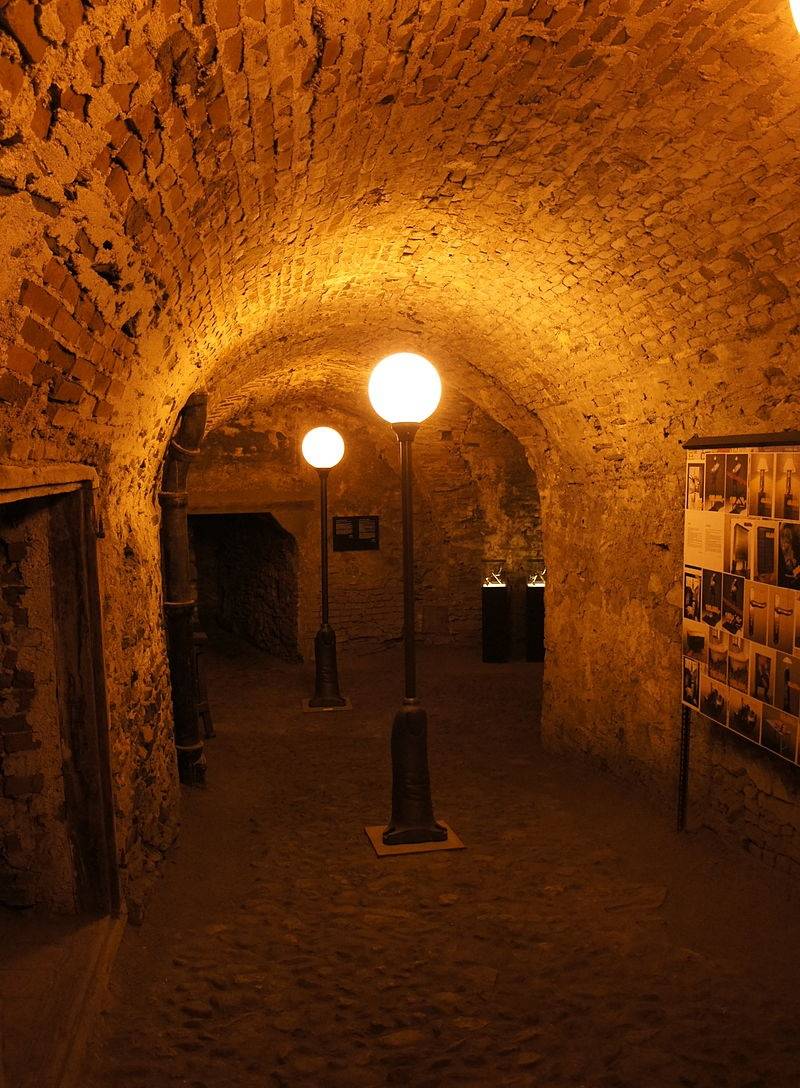
The dungeon of the castle looks like this.
Nevertheless, his children were nevertheless, and the most famous of his six illegitimate offspring was the eldest, Rudolf from Katerina Strada, daughter of the imperial antiquarian, Julius Caesar of Austria, who inherited his father’s mental illness and died imprisoned in Krumlov Castle, after how with extreme cruelty he killed his mistress.
Layout of the castle at the entrance to the museum.
In 1622, the castle fell to the Styrian Eggenberg family. Originally, these were only rich burghers from Graz in Austria. It was established Krumlov principality with the ducal title, which the emperor Ferdinand II bestowed on this family in 1628 year. Unauthorized Dukes of Krumlov continued the tradition of Rosenberg, Eggenberg and used the coat of arms, in which there were five red roses.
The new owners of the castle became the family Schwarzenberg, already known to us, which received it in 1719 year. Krumlov began to expand, the interiors were furnished with valuable furniture, paintings of Dutch painters and tapestries of the 17th century appeared on the walls. The castle was even painted a special room Masquerade, reflecting the fun entertainment of the aristocratic era.
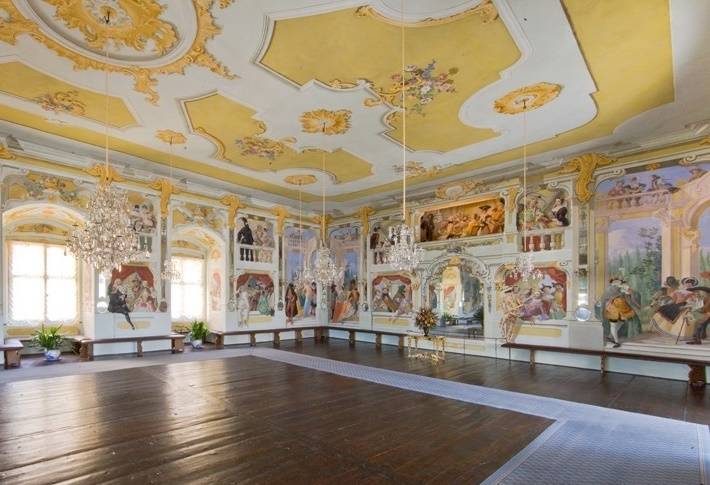
Masquerade Hall.
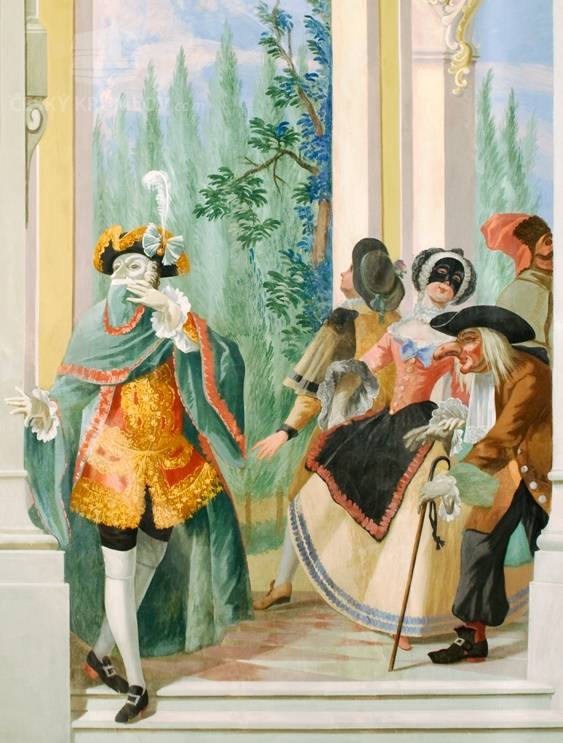
One of his murals.
However, let's continue the tour of the castle.
Another beautiful view of the castle and the city.
Once inside, we consistently get from one closed courtyard to another, and the first of them is opened by the Red Gate with the coat of arms of Schwarzenberg, built in 1861 year. To the right of the arch is the Gothic building of the Salt Depot, and to the left is the New pharmacy with a sgraffito facade, and then there are the stables. Near the stairs is the house manager. Renaissance painting and former brewery; next to it is a forge building, and further - the castle hospital. In the center of the first courtyard you can see a stone fountain built in the XVI century.
Here such stone cores fired on the castle in the XVI century.
In the second yard leads the bridge over the Bear Moat. The owners of the castle considered themselves to be relatives of the noble Italian family of Orsini and brought bears in it, the skins of which, by the way, lay on the floor in many rooms of the castle - convenient, isn’t it?
Weapon musketeers of the Thirty Years War, although one gun is clearly not the time.
For lovers of weapons with wheel locks here is his whole arsenal.
The space of this courtyard is called the Lower City. The facades of the buildings facing the second courtyard have a renaissance appearance, the dominant feature of the whole ensemble is the 13th century structure - Hradek or Little Castle. His Gothic tower became the symbol of Cesky Krumlov. Here is an observation deck overlooking the city. The complex of the second courtyard includes the New House of the Governor, the Mint, a cheese factory (its facade is painted with skillful sgraffito imitating stonework). The center of this courtyard also serves as a fountain, installed in 1602 year.
Equipment rider Czech light armor cavalry of the XVII century. "Panzerniki" - so these riders and called.
From the second courtyard to the third path goes through a stone bridge along a narrow vaulted corridor. There is a balcony that serves as an excellent observation platform. Between the second and third courtyards is Upper Town - the main residence of the Vitkovic family, which surrounds the space of the third and fourth courtyards with a facade. The walls are painted with allegorical frescoes. The third courtyard is most like a stone well; in the middle is the chapel of St. George. The ensemble of the fourth courtyard is formed by buildings from the period of the XIV – XVIII centuries; but below, right in the rocky massif, lurk deep Wenceslas cellars, where today is an exhibition of some modern art.
Always happy to look at the "convenience" of the past time.
The fifth yard was intended for entertainment. Here is a large park with horse riding and a small palace, and the castle theater, built by Eggenberg in 1684 year. From the residential part of the castle to the fifth courtyard is just covered Covered Bridge, which received its strange name by the name of the fortification called “cloak”. The construction of the bridge greatly expanded the castle, turning the bridge into a viewing platform and an extremely elegant element that combined both parts of the castle.
And here's another one. So our AS Pushkin.
On the territory of the castle there is an information center that organizes excursions for tourists, and there are two routes that are not connected to each other. However, since any excursion takes time, and our tourists often do not have much time, it is better to just walk around all the castle courtyards, and buy the tickets to the museums in it. The part I was able to visit is interesting because there are a lot of all kinds of weapons, examples of Austrian uniforms and much more. But to bypass the premises of the entire castle - it takes a long time. You can climb the tower of the castle - it is a separate payment for it - and, although the view from there is very beautiful, people who are tired or with a bad heart should not climb to the top. The beauty of the Cloak Bridge will be quite enough for you!
And this is ... one of the copies of the famous “Code of Manesus”, the original of which is kept in the library of the University of Heidelberg. People glance and pass. Well ... some old book, so what? And the fact that they face the most valuable source of our knowledge about the Middle Ages, dated 1300.
But to stay in the castle and then it makes no sense. We must go down to the city. Again, go down the green hill, go under the Cloister Bridge, then along the bridge over the Vltava River and ... just go take a walk along the streets of this toy town. There is a torture museum, a puppet museum, a local history museum, and even a motorcycle museum. But even though the town is small, you just can’t get around this in a day! In addition, because it is necessary to eat!
The Vltava river in front of the castle is not deep at all.
But this is a water mill. Today it is a place to go to eat very well!
In Krumlov, the question of where to reinforce your weakening forces is simply not worth it. There almost every house or pub, or something, where they feed, however, it is best to sit not somewhere in the city, but in a restaurant above the watermill. They feed there very well, very tasty, and the Krumlov-style meat with stewed sauerkraut, Czech dumplings and ... dark local beer is beyond praise. The price of lunch with “soup”, with this very meat (you need to take a portion in 200, 400 - in my opinion, it is simply impossible to eat, although you can take the leftovers with you, the plastic container is given for free) and a large mug of beer for four 77 costs Euro, which is no more expensive than ours, but the quality is incomparable, of course. On the left or on the right (that's how you sit), a pacifying stream of water will flow, and above your head ... a huge castle with a Cloak bridge will rise with its bulk. Sight, believe me - absolutely unforgettable!
Interestingly, Cesky Krumlov produces ... its own 70% chocolate. Naturally packaged with views of the city and the castle. It is clear that chocolate does not grow in Krumlov. So Krumlov people buy it and, having processed it to an appropriate condition, they pack it in such boxes. We also have a lot of all kinds of sights and just beautiful places, which are simply asking for such packaging, but for some reason nobody thought of such chocolate. In any case, I did not see such a thing myself! But after all, with such “children's sweets”, by the way, local patriotism, as well as love for all our great Motherland, begins.
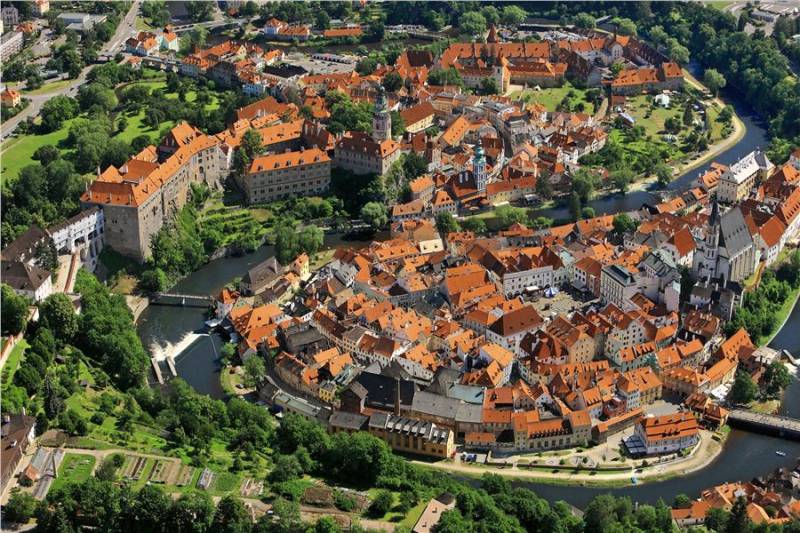
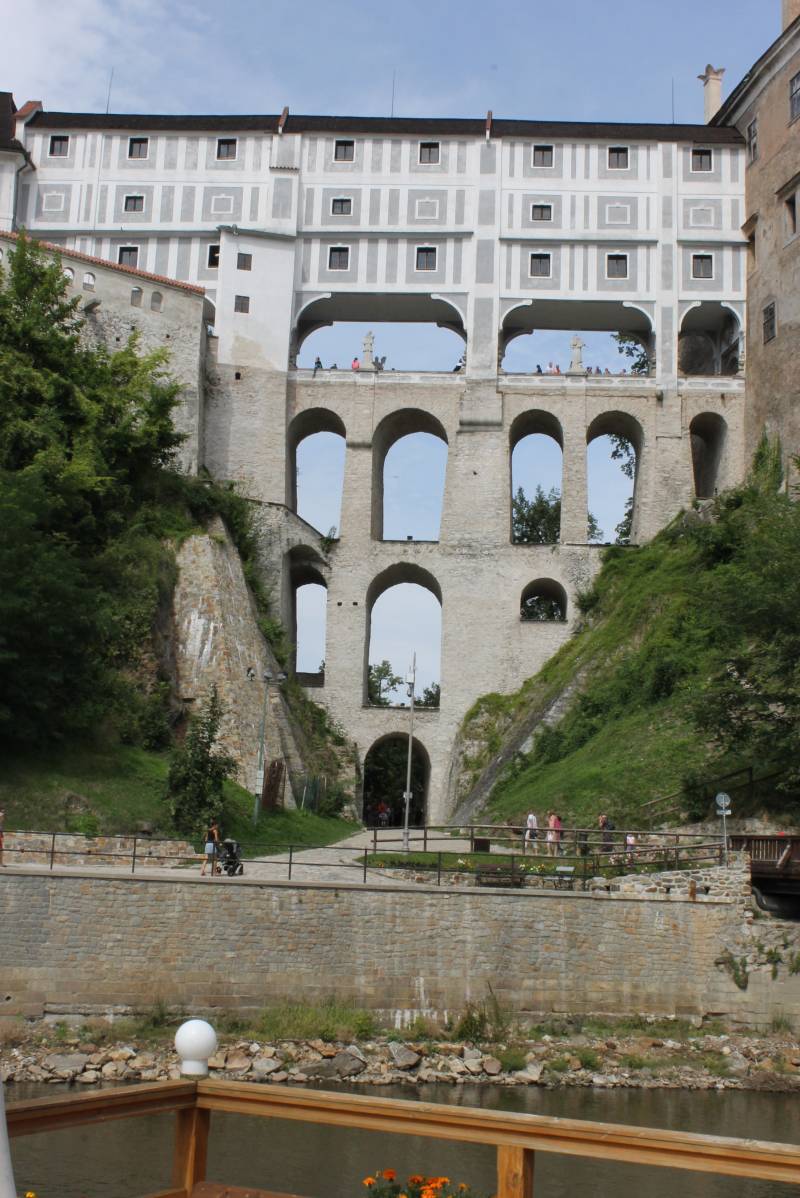
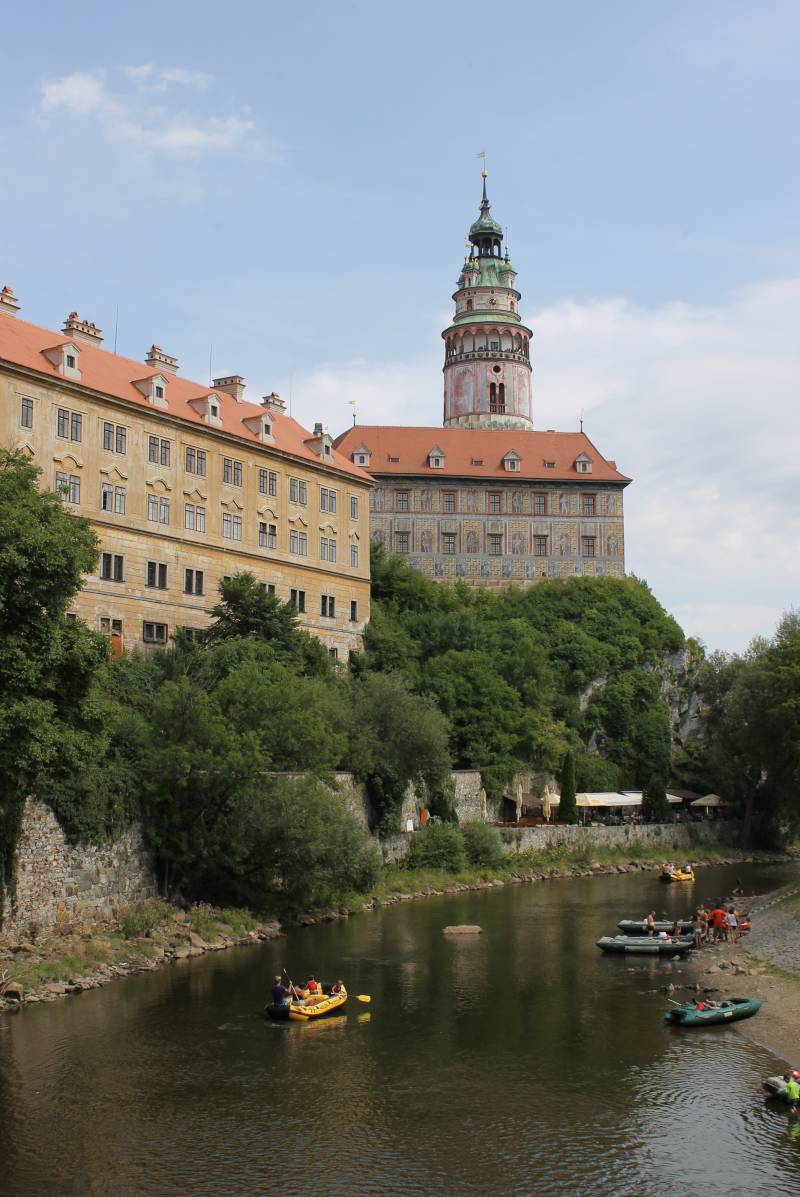
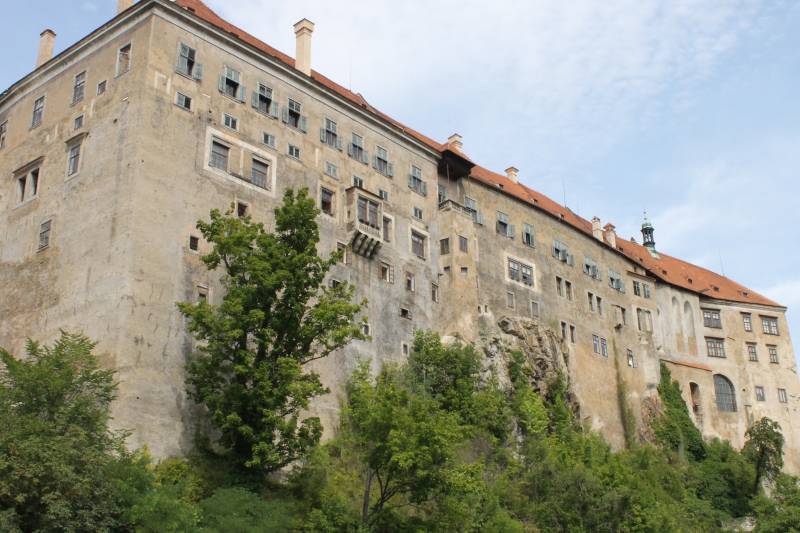
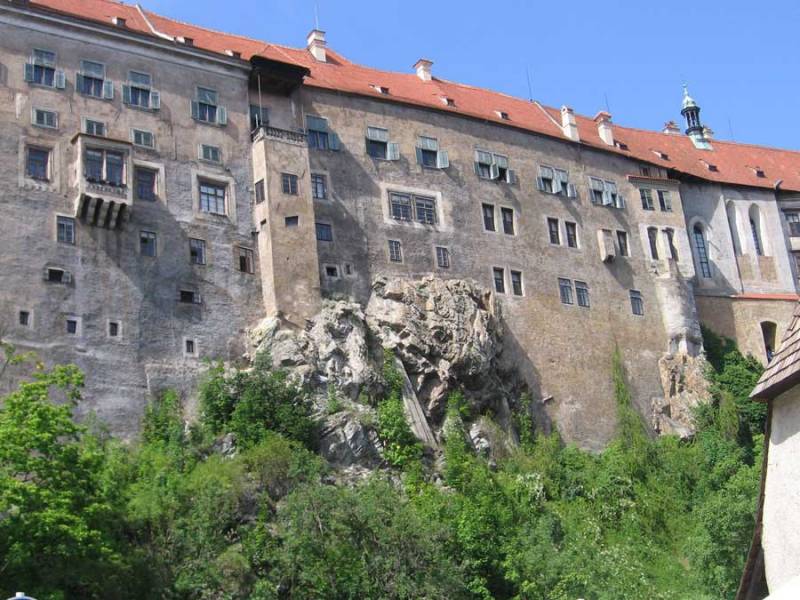
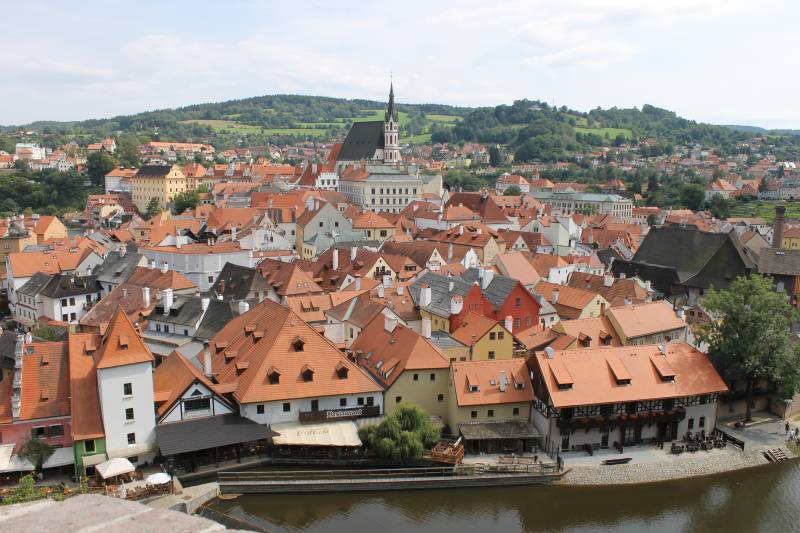
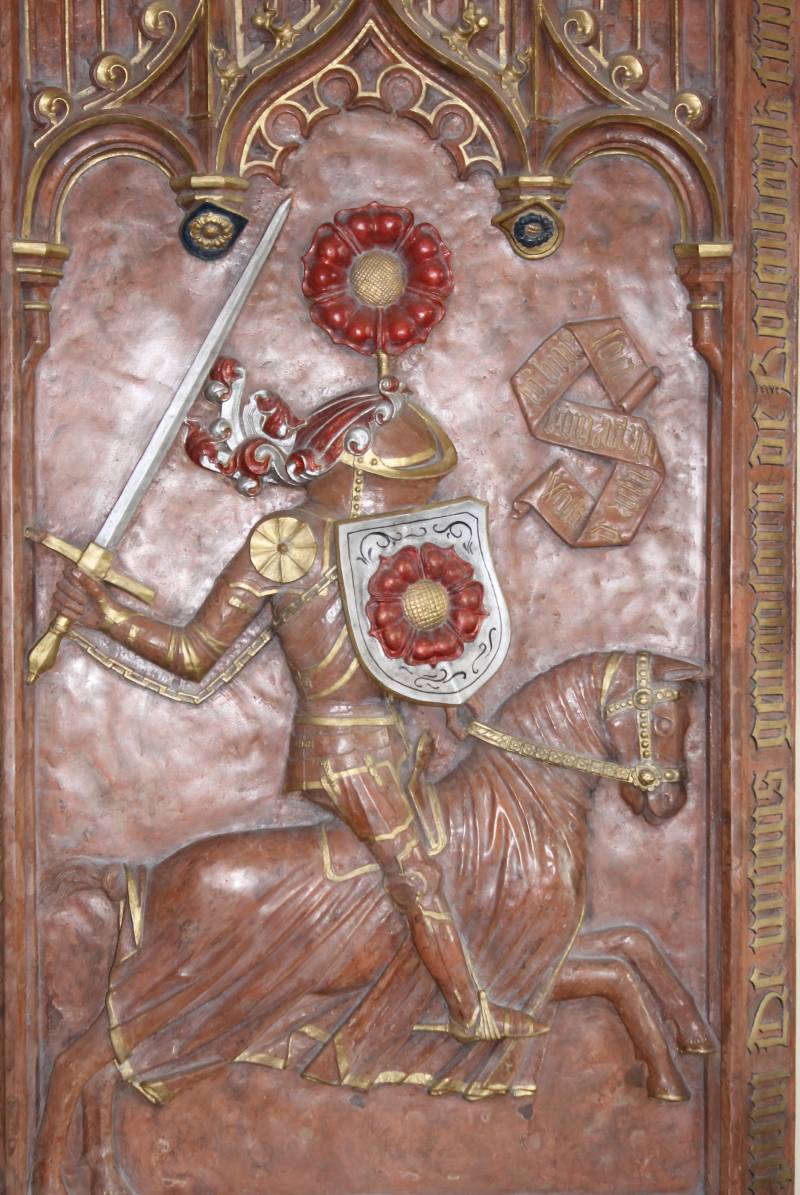
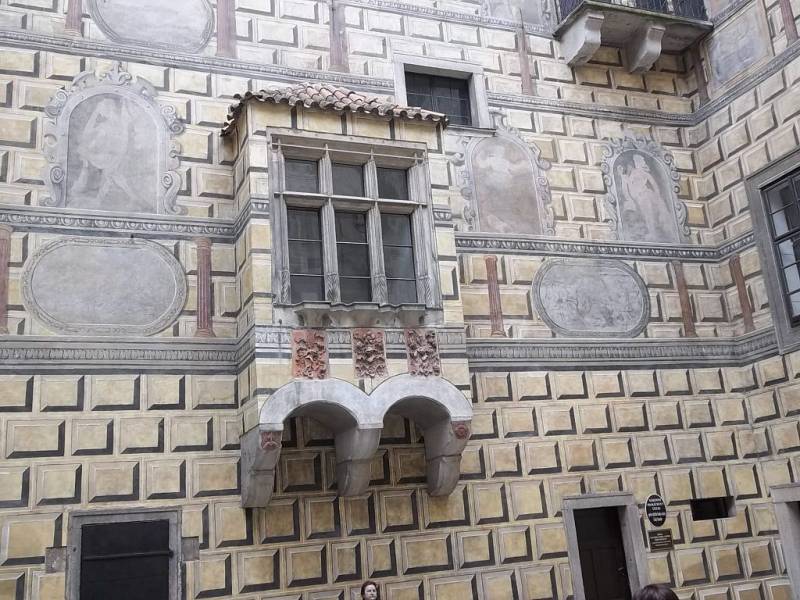
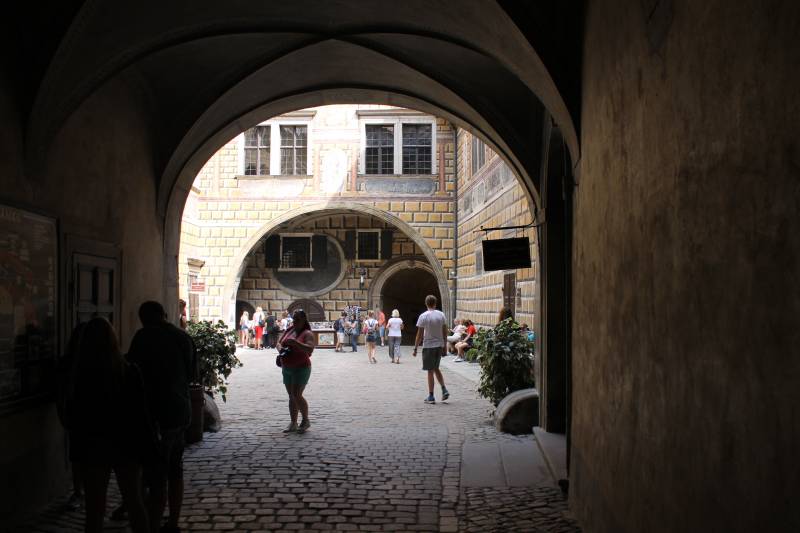
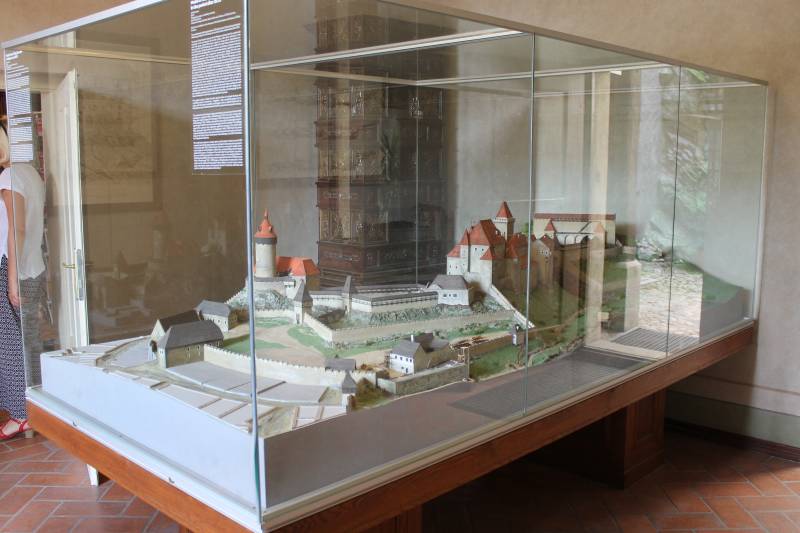
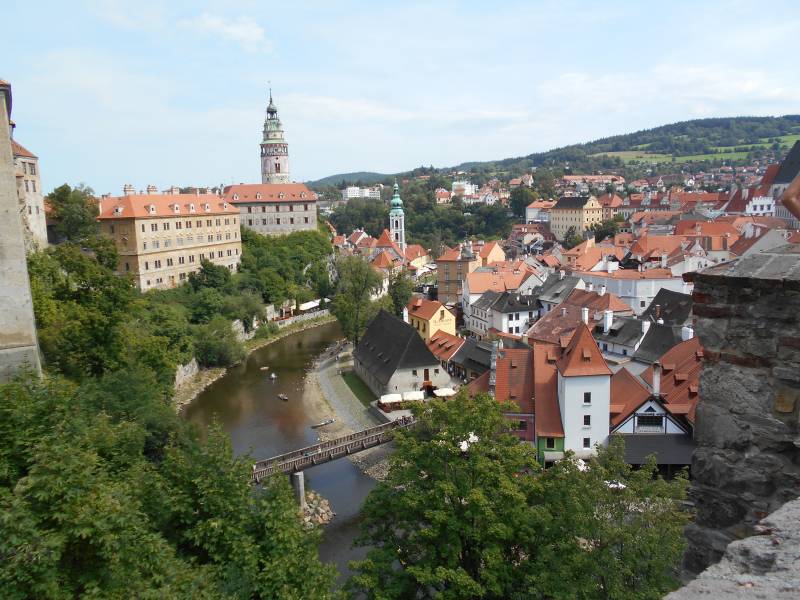
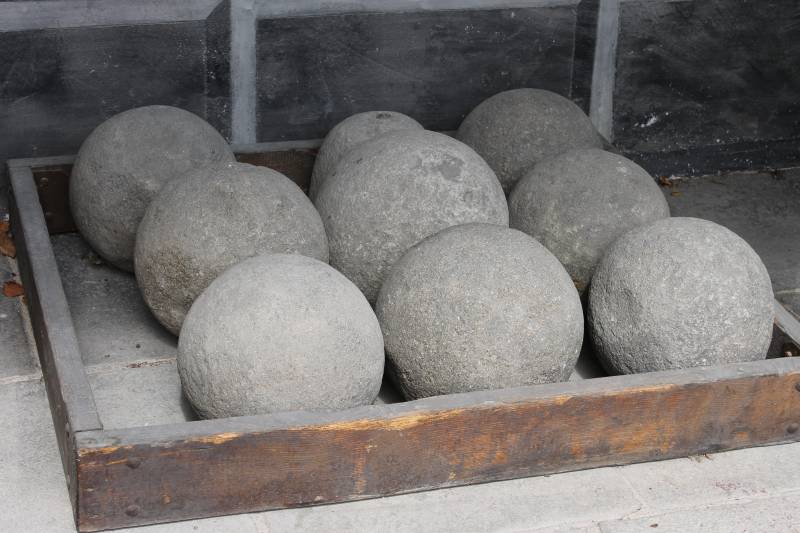
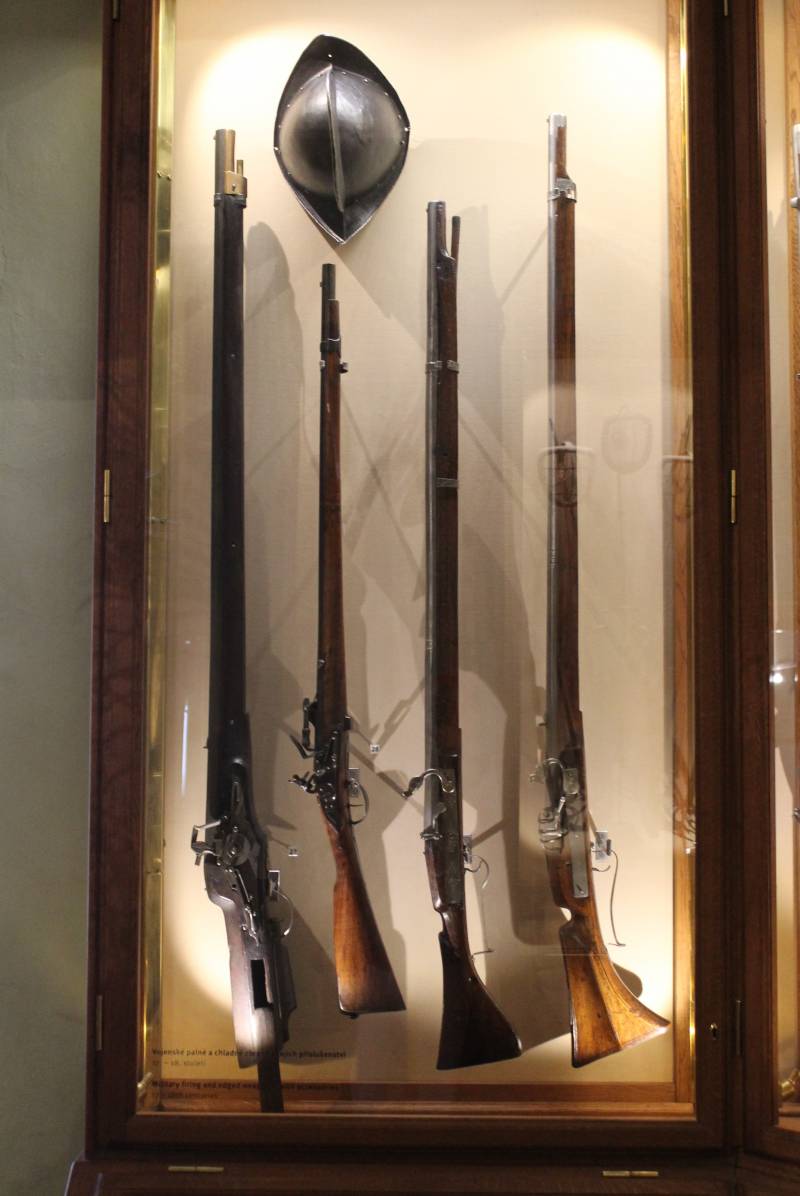
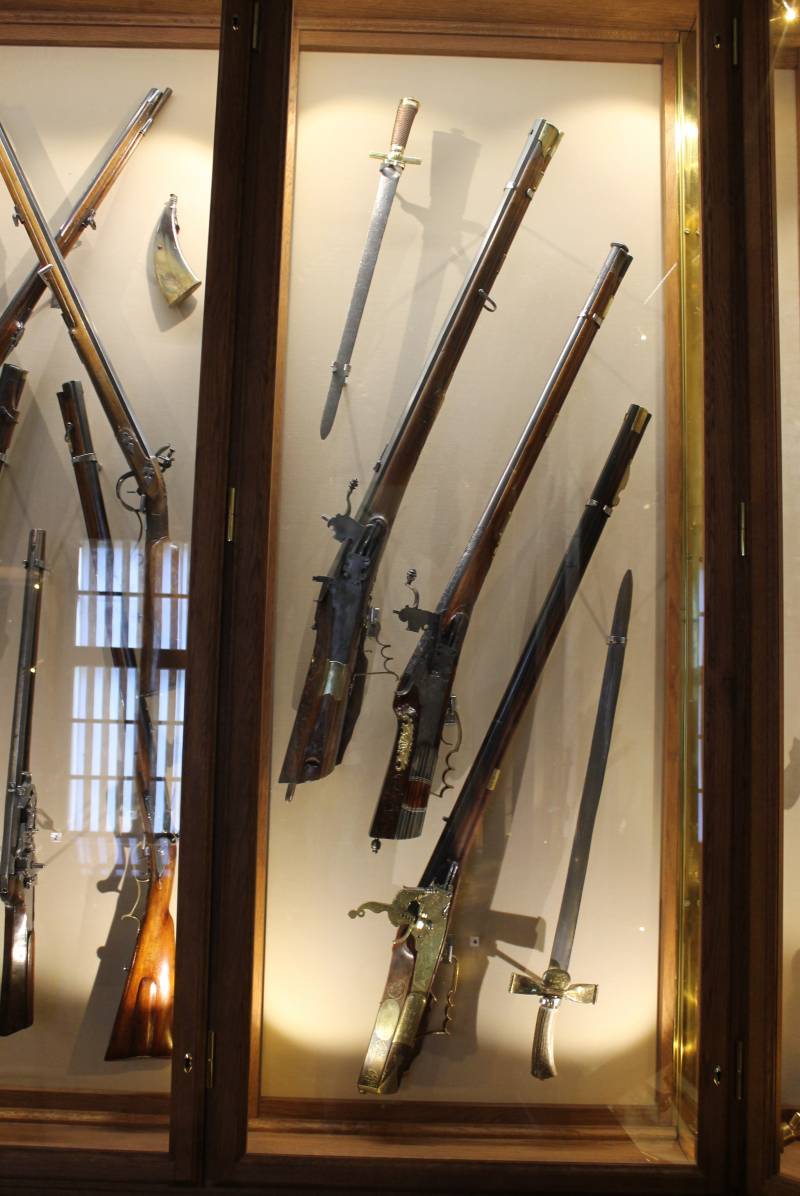
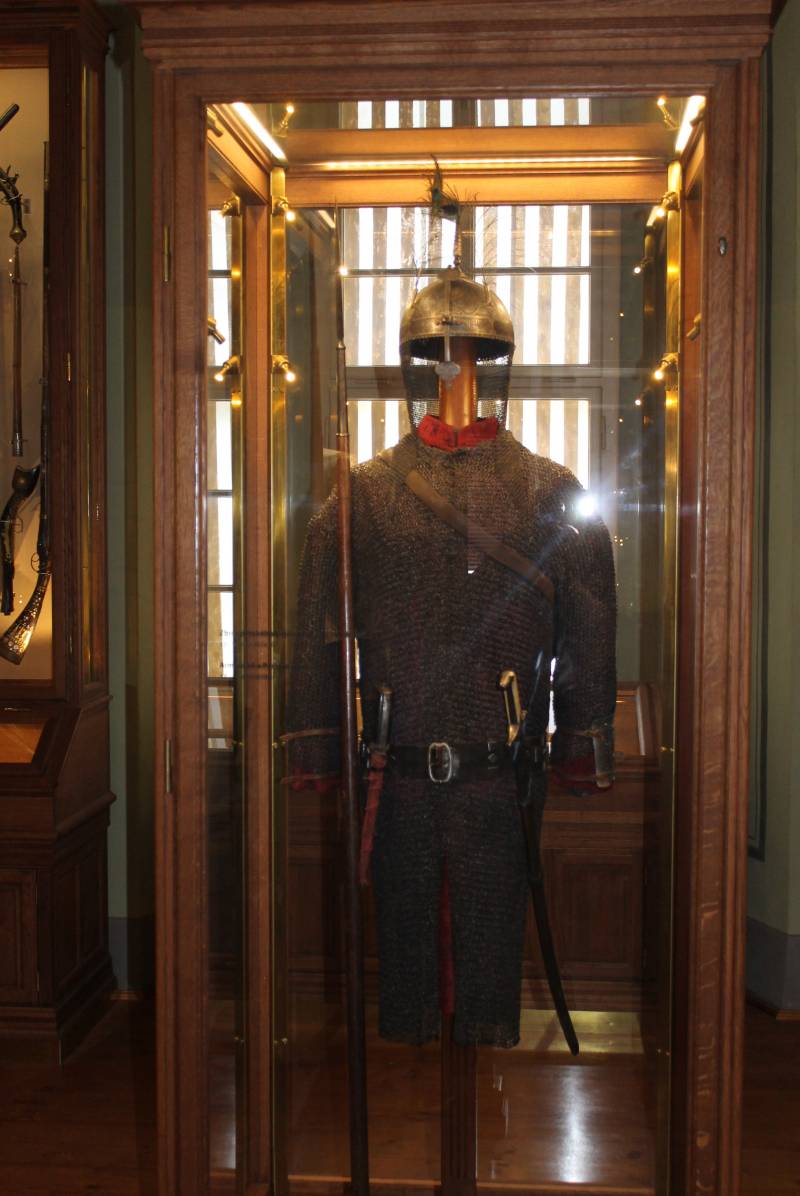
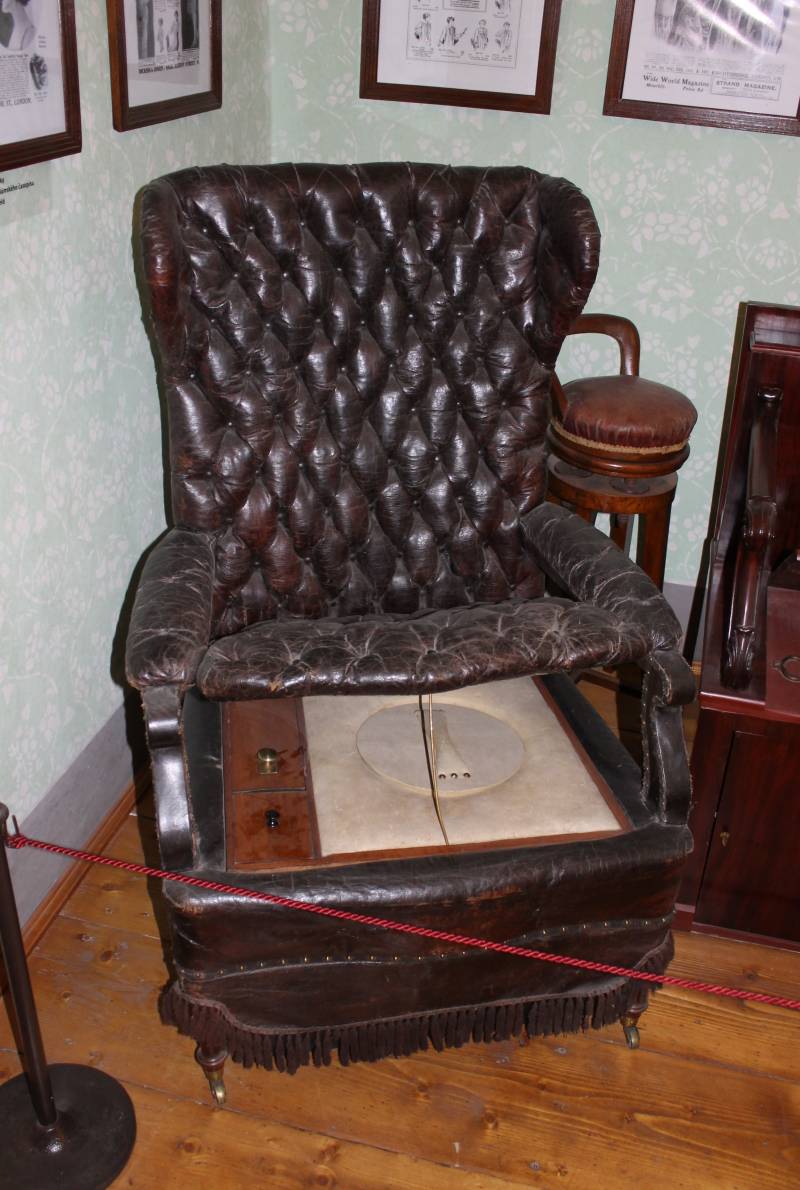
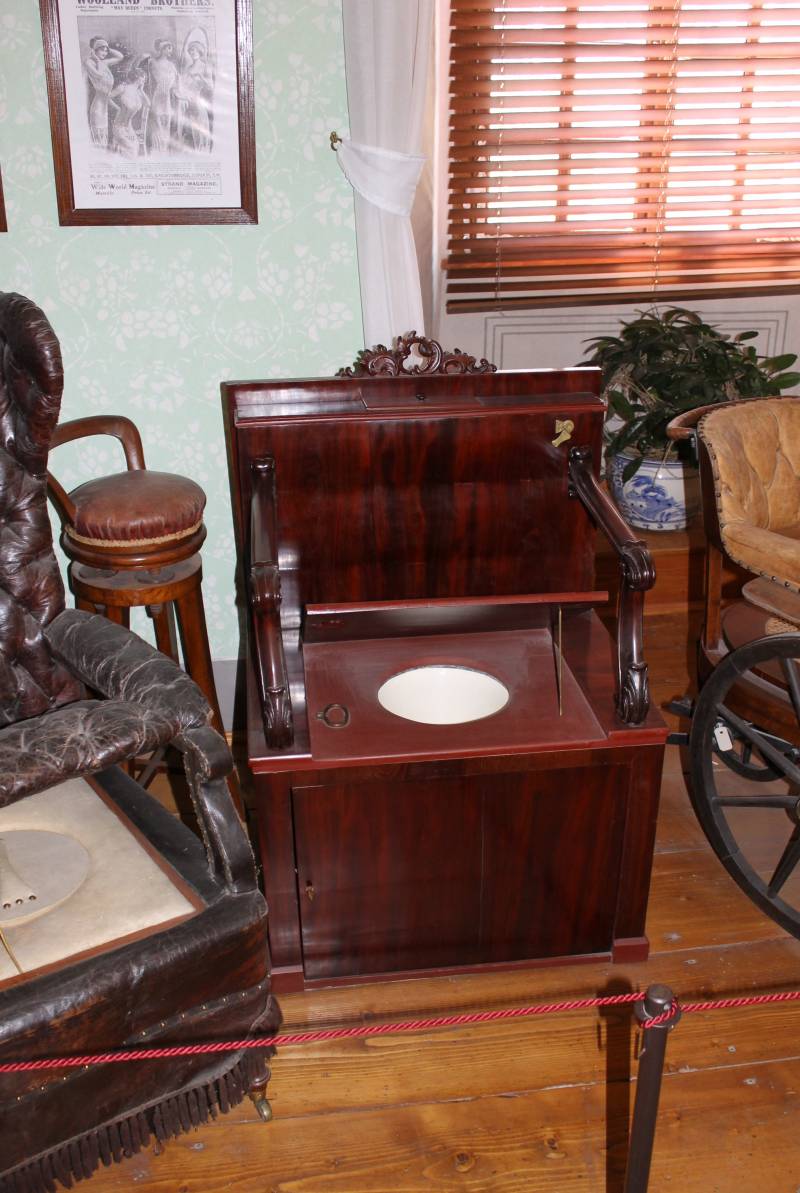
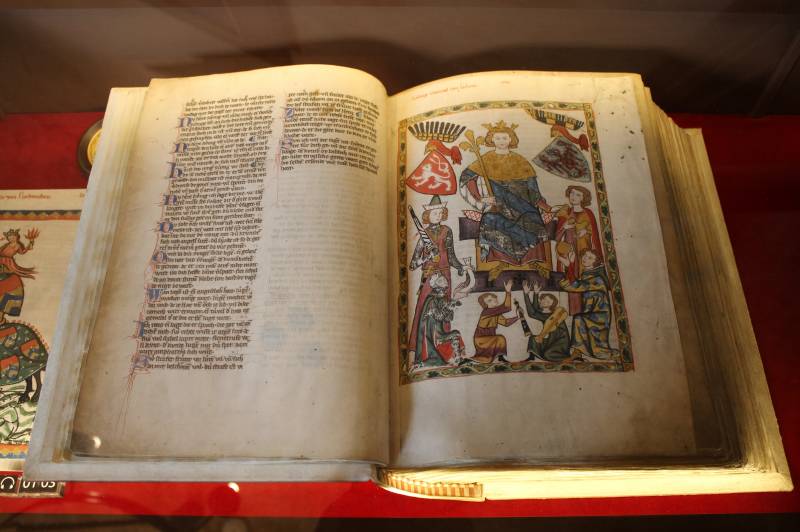
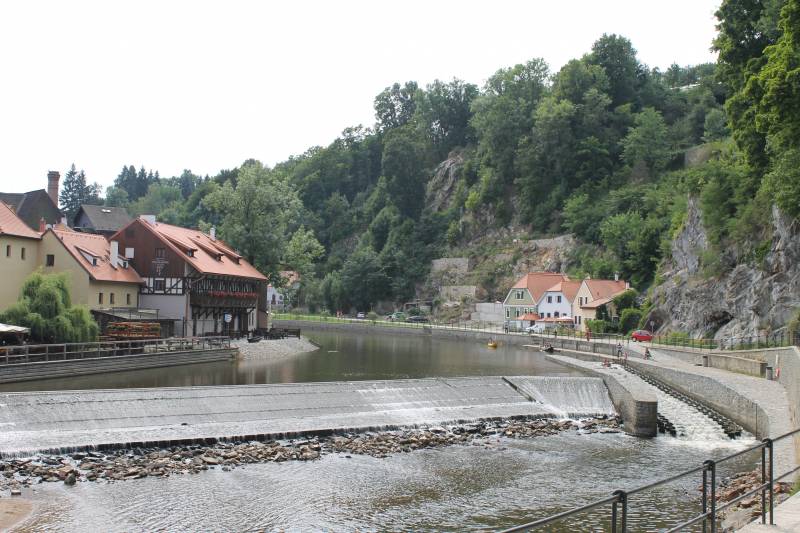
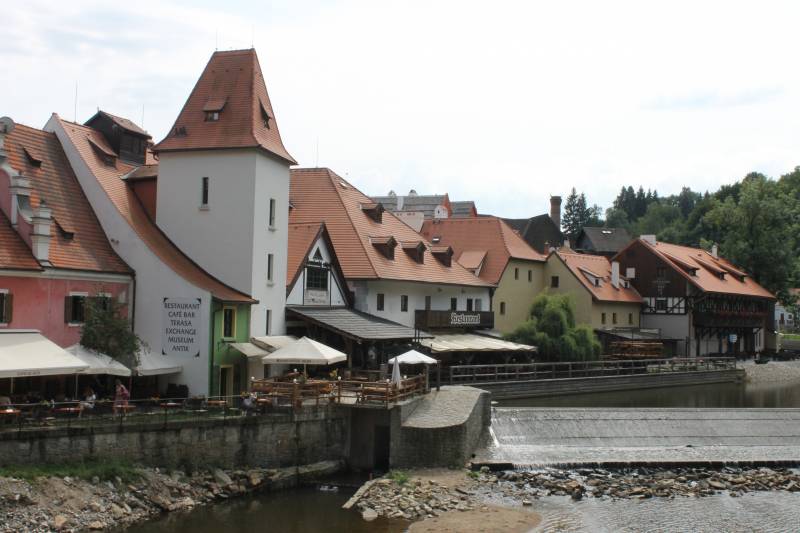
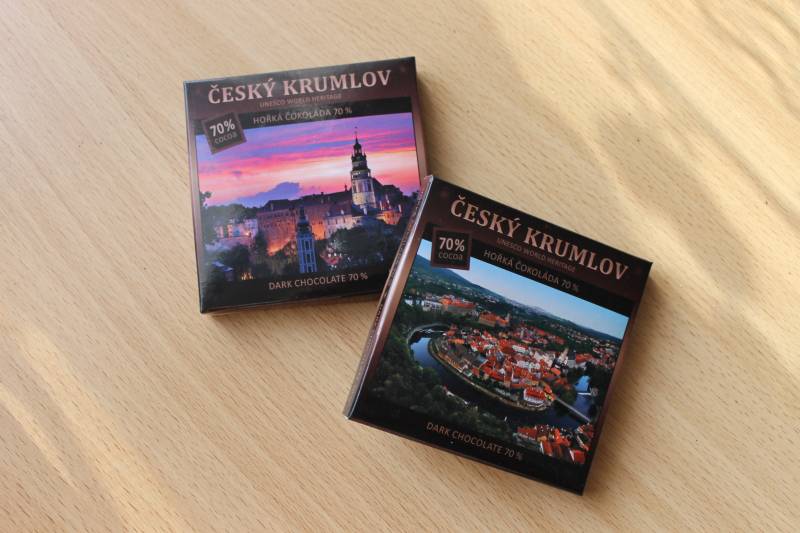
Information